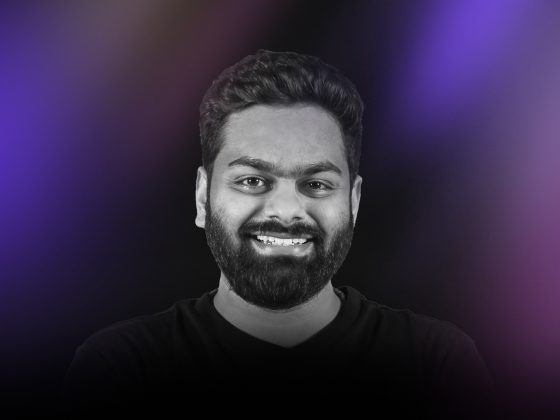The Future of Events: Leading With Technology, Data, and Personalization

Event marketers face increasing expectations to deliver engaging and personalized attendee experiences. However, they are often let down by tech platforms that limit creativity, add manual and repetitive tasks to their workflows, and prevent meaningful use of event-related data.
"Events are coming into the spotlight as a channel that can drive key business outcomes. People strive to create standout experiences but feel that tech gets in their way."
In this article, Vedha Sayyaparaju, Co-Founder & CTO at Zuddl, shares how some of Zuddl’s customers use technology and data to push the boundaries of their events and deliver standout experiences.
Use case #1: Hyper-personalized follow-up campaigns
Vedha's first example discusses how a customer took their event follow-ups to the next level.
This company hosted a virtual user conference over two days. The first day was open to partners, prospects, and customers, while the second was exclusive to customers.
First, the company used Zuddl’s Access Control functionality to ensure attendees received calendar blocks only for their designated sessions.
They then used event data to create hyper-personalized follow-up journeys for attendees. Here’s what they did:
- Persona-based tracks: The company identified four key sessions per persona (security, procurement, HR, and finance). For each persona, they created 16 different follow-up journeys based on attendee engagement.
For instance, if someone did not attend any of the four sessions, they would receive follow-up emails with links to the clips from the sessions they missed, nudging them to watch the complete sessions. - Data-driven personalization: They captured detailed session data—who attended which sessions, duration of attendance, poll interactions, and questions asked. This data informed their hyper-personalized outreach via platforms like SalesLoft.
For instance, if an existing customer attended a session about a product they haven’t yet purchased, the company could trigger personalized follow-up emails to gauge their interest in that product.
This approach helped the company achieve a remarkable 100% follow-up rate within 24 hours of the event.
Use case #2: A unified hybrid event experience
The next example Vedha shared involves a large advisory company that tackled the challenge of seamlessly balancing virtual and in-person experiences at its annual leadership conference.
Usually, in a hybrid event, one format outshines the other, leading to people prioritizing the superior experience.
However, this company was determined to deliver a premium experience to both their virtual and in-person attendees. Here’s how they did it:
- Synchronous streaming: By using WebRTC technology instead of the more common RTMP, they eliminated the delay for virtual attendees, keeping the event real-time for both groups.
- Unified engagement: Polls, surveys, and Q&As were simultaneously shared across the virtual platform and the event’s mobile app for in-person attendees, creating a unified engagement experience.
"Having no delay really worked in this case. Virtual and in-person attendees stayed completely in sync, and polls were launched simultaneously to both."
To further boost engagement, they introduced interactive breakout rooms and virtual speed networking sessions after key sessions. This helped virtual attendees dive deeper into the discussed topics and increase networking opportunities.
Use case #3: Automated registration and session management for SKOs
Another impressive use case came from a public security company during their Sales Kickoff (SKO) event. The company had a mix of internal employees and partners attending, with each group's specific registration and session access needs.
Here's how the company addressed this complexity:
The registration flow was automated through Zuddl’s Visual Flow Builder, which allowed the company to easily manage different registration types. They achieved this with:
- Tailored form questions: Different groups received unique sets of questions during registration based on their roles and preferences (e.g., partner vs. internal employee or in-person vs. virtual).
- Automated session assignment: Attendees were automatically enrolled for mandatory sessions based on their role, and their access was configured through audience segments, making it easy to adjust access as needed.
"With this approach, they had a lot of flexibility in setting up base rules while still having fine-grained control over session assignments."
By eliminating manual workflows, the company streamlined the SKO experience for organizers and attendees, reducing administrative burdens and creating a more tailored experience for each participant.
Transforming event marketing with technology and data
These examples show how leading with technology and data can completely transform the event experience for both marketers and attendees.
Whether through hyper-personalized follow-ups, synchronous hybrid events, or automated workflows, the key takeaway is clear: the right tools help you deliver outstanding, personalized experiences without getting bogged down in manual tasks.
Watch the complete video session for more insights.





